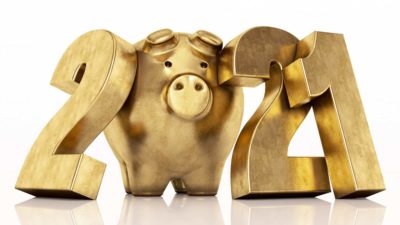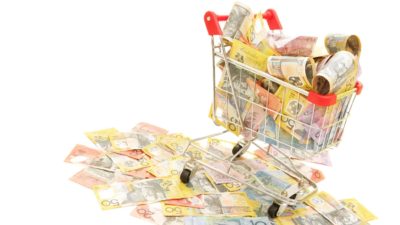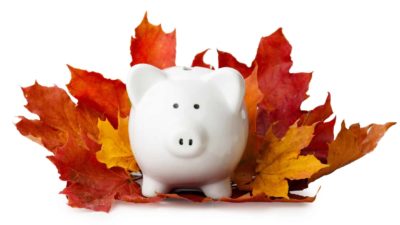China's biggest problem isn't pollution, even though it is putting children in hospitals. It isn't bad demographics either, even though that will cause economic migraines later. And it isn't corruption, which is being strangled out.
It's not the hukou, communism, overbuilding, or Ghost Cities. It cannot be intimidated or thrown in jail. Like a toxic snowball rolling downhill, it will only grow bigger and uglier unless drastic action is taken.
China's biggest problem is debt — and it is a very, very big problem.
Mao Money, Mao Problems
The Chinese are bright, industrious, and hardworking, but it takes a lot more than that to post such miraculous growth. Indeed, the "miracle" is usually debt, and China's debt is inflating at alarming rates.
China's total debt quadrupled from $7.4 trillion in 2007 to $28.2 trillion in 2014, per McKinsey Global Institute. Only four countries grew their debt-to-GDP ratios by more than China from 2007 through 2014 — Ireland, Singapore, Greece, and Portugal — and three of those four countries are crippled by debt and 10%-plus unemployment.
Most investors view China as having a strong balance sheet because of its $3.9 trillion in foreign exchange reserves. Also, according to McKinsey, Chinese household debt as a percentage of GDP clocks in at just 38%, which makes Australians look gluttonous at 113%.
The devil is in the details. Or, more specifically, corporate and local government debt. Corporate debt, between financial and non-financial institutions, reaches 190% of GDP. That leaves China with total debt to GDP of 282% — higher than wealthy, slower-growing economies like the U.S. (269%), Australia (274%), and Germany (258%).
Two Big Problems
China's debt explosion introduces two big problems.
The first is that debt stifles growth. All that debt must get paid down at some point. Meantime, interest coverage eats up cash that would have otherwise gone into investment or the pockets of consumers. (A chicken in every pot and an iPhone in every pocket!)
It should be no surprise that the countries with the highest debt-to-GDP (excluding financial corporate debt) have averaged 0% GDP growth over the past four years.
And, if China grows its debt by the same proportion over the next seven years as over the past seven, it will find itself in the company of countries posting growth that most consider unthinkably low for China.
We're already seeing cracks in the growth model. China's GDP growth has slowed from 14.2% in 2007 to 7.7% in 2014, and that's despite its debt-to-GDP ratio expanding by 61%. Without an expanding balance sheet (taking on more debt) China would not be able to grow anywhere near 7%.
The other big problem is an increased risk of a financial crisis. It's a hard risk to quantify and I can't think of a single less worthwhile activity for investors than sitting around trying to predict the next financial crisis.
But it's a real risk that grows with the debt, and crises do happen. The U.S. has had 15 banking crises since 1792, after all, and during the bulk of that time it had a much cleaner balance sheet than China does today.
Speaking of, McKinsey estimates that China now has $6.5 trillion in loans made by shadow banking entities. That's 23% of the total burden and accounts for half of new lending. Again, it's hard to quantify risks here, but as the last U.S. credit crunch demonstrated, a rapid explosion in creative, off-the-grid financing rarely ends well.
You don't have to just take my word for these worries, by the way. The Chinese government just reduced the amount of capital banks have to hold as reserves and cut interest rates for the first time since 2012. The government also reported that imports dropped 20% in January — an incredible shortfall from economists' forecast of a 3% dip. Little wonder the RBA cut rates while we were in China…
Pro's Move
I won't pretend to guess when, how, or if China might fix or get fixed by its debt burden. What I know, though, is that 1) balance sheets can't grow forever and 2) growth stalls when leverage expansion stalls.
Also, for Australian investors, it doesn't matter whether China has a hard or soft landing. China is already overbuilt — exhibit A, Ghost Cities — meaning demand growth for Australia's key commodities will be tepid, at best. We're very bearish on the future of iron ore.
But the good news is we're not confined to invest in commodity producers. Instead, we at Motley Fool Pro have carefully pieced together a portfolio loaded with recurring revenue, strong balance sheets, growing dividends, and global reach. And we're sleeping very well.
A great example of the kind of opportunity we're focused on today at Motley Fool Pro is Altium (ASX:ALU), which we doubled down on in early January. The company, which is listed on the ASX but pulls more than 90% of its revenue from outside Australia, offers software that helps engineers design printed circuit boards (PCB).
PCB design is a growing market and, thanks to new products rolling soon focused on capturing both higher- and lower-end customers, Altium has a couple of meaningful catalysts on the horizon. Not that it isn't already thriving with its cutting edge customer base, including NASA, Google, Tesla, and more.
Altium's financials are in great shape and offer a rare combination of yield, growth, and protection. The company has 19% of its market cap in net cash, yields 3.8%, and posted 17% revenue growth in the first half of this fiscal year. The balance sheet protects our downside, the growth gives us upside, and the yield pads our returns, especially in this falling rate environment. Another plus: 47% of revenue comes via subscriptions.
Recurring revenue? Strong balance sheet? Growing dividends? Upside to a falling Aussie dollar? Yes on all counts. You can see why we're fond of the shares, and why Pro research analyst Matt Joass' recently highlighted Altium in the Sydney Morning Herald. And, of course, Pro members can read our full reports on our members-only website.
Foolish Best,
Joe Magyer
Portfolio Manager, Motley Fool Pro











